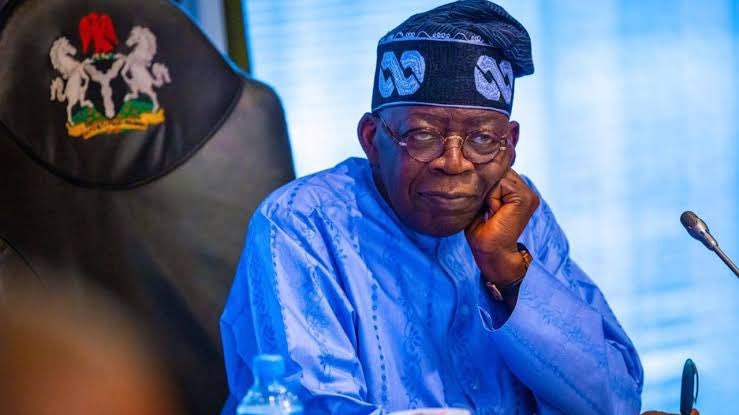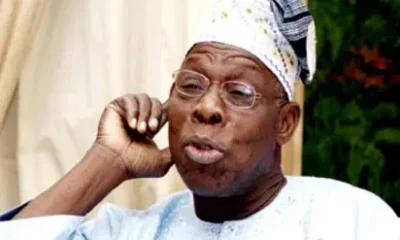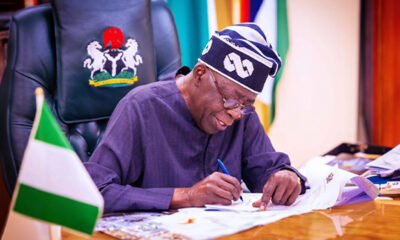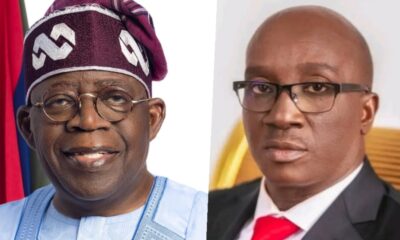Business
Who Nigeria Owes: Full Breakdown as Public Debt Soars to ₦152.39 Trillion in June 2025
Nigeria’s total public debt has climbed to an all-time high of ₦152.39 trillion as of June 2025, according to new data from the Debt Management Office (DMO).

- Nigeria’s total public debt has climbed to an all-time high of ₦152.39 trillion as of June 2025, according to new data from the Debt Management Office (DMO).
- The latest figures reveal a sharp rise driven by fresh borrowings and exchange rate adjustments, with major creditors including the World Bank, China, and holders of FGN Bonds.
Nigeria’s total public debt has surged to ₦152.39 trillion as of June 2025, marking the country’s highest debt profile in history in Naira terms.
This is according to the latest figures released by the Debt Management Office (DMO), which also revealed that public debt in dollar terms has climbed to $99.68 billion, just $400 million short of hitting the $100 billion mark.
The consistent rise in Nigeria’s debt stock reflects a combination of fresh borrowings and the impact of the appreciating exchange rate on foreign debt obligations.

Nigeria’s Debt Structure: Local and Foreign Creditors
Nigeria’s debt portfolio is split between domestic and external creditors — including multilateral lenders, bilateral partners, and local investors.
The federal and state governments currently owe international partners such as China, France, Germany, and Japan, as well as institutions like the World Bank, the African Development Bank (AfDB), and the Islamic Development Bank (IsDB).
Locally, Nigeria’s domestic debt is raised through FGN Bonds, Treasury Bills, Sukuk, Green Bonds, and Promissory Notes.
Below is a detailed breakdown of Nigeria’s key debt obligations as of mid-2025:
7. Syndicated Loans (₦321.09 billion | $210 million)
Type: Bilateral / Commercial
Definition: Facilities arranged by groups of banks, often coordinated by institutions like the Africa Finance Corporation (AFC).
Purpose: Bridge financing, refinancing maturing loans, and short-term fiscal support.
Share of Total Debt: 0.21%

6. Other Countries & Promissory Notes (₦1.12 trillion | $735 million)
Type: Promissory / Bilateral
Definition: Instruments issued to settle verified obligations owed to contractors, exporters, or state governments.
Purpose: Clearing arrears and state refunds.
Share of Total Debt: 0.7%
5. African Development Bank Group (₦5.82 trillion | $3.80 billion)
Type: Multilateral
Definition: Loans from AfDB and its arms — the African Development Fund (ADF) and Africa Growing Together Fund.
Purpose: Infrastructure, industrialization, and regional trade.
Share of Total Debt: 3.8%
4. China (₦8.46 trillion | $5.53 billion)
Type: Bilateral
Definition: Loans from the Exim Bank of China and China Development Bank, mostly under the Belt and Road Initiative.
Purpose: Railways, airports, energy, and ICT projects.
Share of Total Debt: 5.5%
3. World Bank Group (₦29.65 trillion | $19.39 billion)
Type: Multilateral
Definition: Credits from the International Development Association (IDA) and the International Bank for Reconstruction and Development (IBRD).
Purpose: Supports agriculture, education, fiscal reforms, power, and social investment.
Share of Total Debt: 19.4%
2. Eurobonds (₦26.48 trillion | $17.32 billion)
Type: Commercial
Definition: Dollar-denominated bonds issued in international markets.
Purpose: Finance budget deficits, boost reserves, and refinance maturing debts.
Share of Total Debt: 17.4%

1. FGN Securities (₦80.55 trillion | $52.68 billion)
Type: Domestic
Definition: Core local instruments like FGN Bonds, Treasury Bills, Savings Bonds, Sukuk, and Green Bonds.
Purpose: Funds the federal budget and capital projects.
Share of Total Debt: 52.8%
Government’s Plan for 2025 Borrowing
President Bola Ahmed Tinubu has sought legislative approval to raise $2.3 billion in external capital for the 2025 fiscal year — including $1.2 billion in new loans and $1.1 billion to refinance a maturing Eurobond.
According to the presidency, the move aims to ensure debt sustainability while channeling funds toward infrastructure and economic growth.
Meanwhile, the World Bank’s Nigeria Development Update (October 2025) projects that the nation’s debt-to-GDP ratio will fall below 40% for the first time in over a decade, driven by steady growth, tighter fiscal discipline, and structural reforms.
Nigeria’s Economic Outlook
The World Bank reported that Nigeria’s economy grew 3.9% in the first half of 2025, compared to 3.5% in 2024, with forecasts indicating 4.4% growth by 2027.
It also noted foreign reserves above $42 billion and a current-account surplus of 6.1% of GDP, reflecting stronger non-oil exports and reduced oil imports.
























You must be logged in to post a comment Login